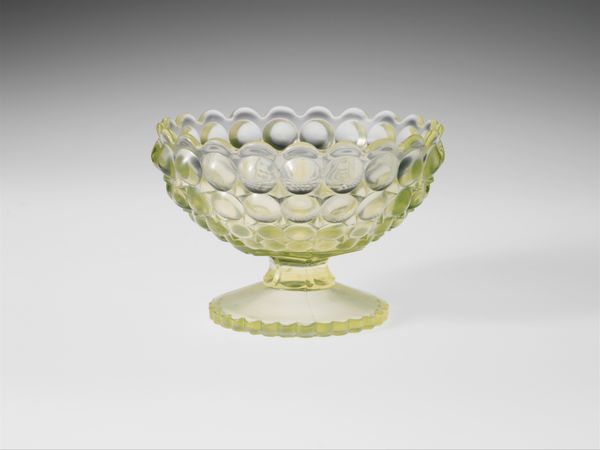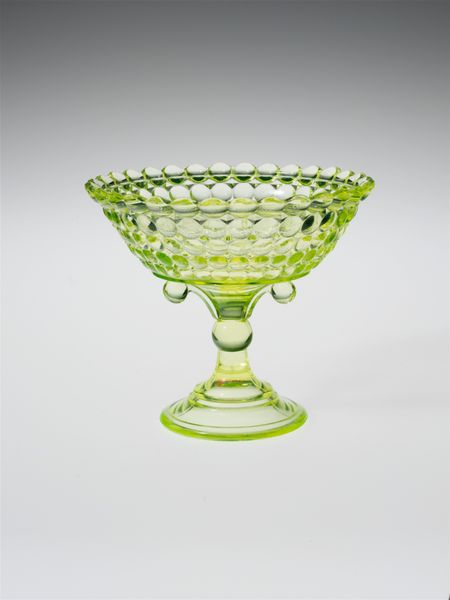
glass
#
glass
#
decorative-art
Dimensions: H. 2 5/8 in. (6.7 cm); Diam. 4 in. (10.2 cm)
Copyright: Public Domain
This delicate sauce dish was produced by the Richards and Hartley Flint Glass Company sometime between 1867 and 1890. At this time, industrial production of pressed glass was transforming the American table. Forms and motifs, like the hobnail pattern on this dish, imitated the cut glass associated with wealth. Indeed, the mass manufacture of glassware became a symbol of middle class aspiration. Companies like Richards and Hartley helped make elegant, if mass-produced, objects widely available. These firms were concentrated in Western Pennsylvania, close to the coalfields that powered their factories. Production depended on the labor of European immigrants. Looking at objects such as this, the art historian can trace broad social trends in material culture and the changing dynamics of class. Trade catalogs, company records, and census data can help us to reconstruct this history. The meaning of art objects resides not just in their aesthetic qualities, but in their relation to the social and economic conditions of their making.
Comments
No comments
Be the first to comment and join the conversation on the ultimate creative platform.













